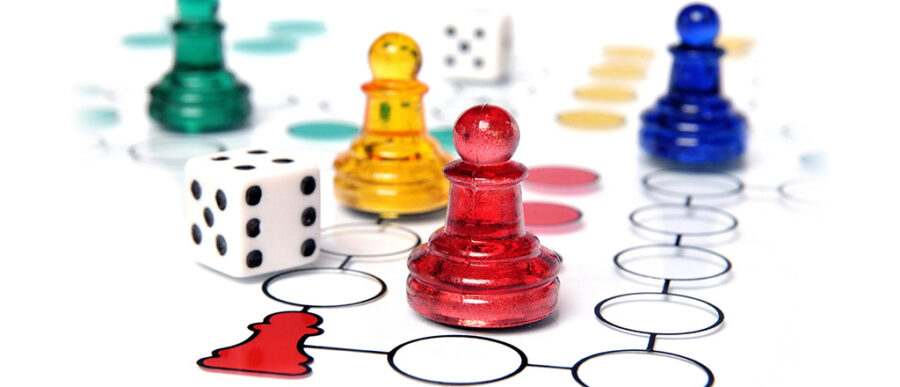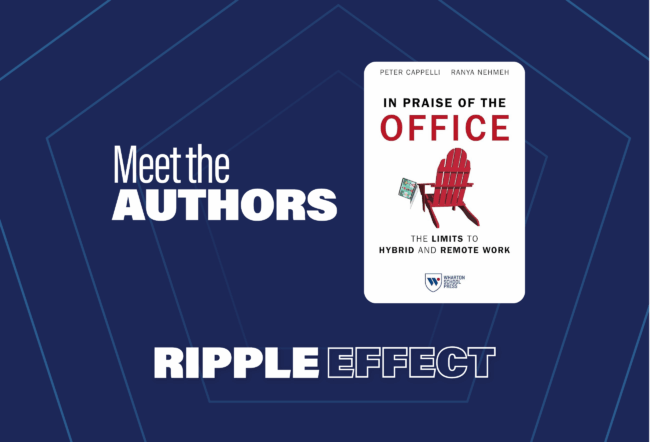Would you invest in a motivational program for your employees that has a success rate of only 60% or 70%, and is based on a field so new that researchers are still arguing about how to define it?
That field would be gamification: loosely, the application of motivational game elements to non-game situations such as business, education and fitness. The profound uncertainty around it isn’t stopping many companies large and small, who report that they are getting some impressive results. Experts from Accenture, Fidelity and other firms shared their successes and ongoing challenges at the recent Wharton conference, “Gameful Approaches to Motivation and Engagement.”
Amaya Capellan, a vice president of product at the Philadelphia-based software start-up PeopleLinx, told how she has successfully applied gamification to increase sales rep engagement on the company’s software product. She described a pilot performed last summer with a client that had low engagement on the PeopleLinx platform: Out of 500 global sales reps, only about 100 used it regularly. According to Capellan, over the 60-day course of the pilot, the number of monthly active users on the platform increased eightfold, and usage doubled for the two main features of the PeopleLinx product.
The gamification solution consisted of sending out a weekly email containing a leaderboard displaying people’s progress to all the reps whether or not they were using the program. Photos of the participants were included. Capellan said the email was specifically designed to demonstrate to employees that their colleagues were doing the activity and becoming more and more involved. “[They saw that] people they recognized and respected were participating…. It encouraged them to give it a try as well.”
Will Giammona, like Capellan, has experienced wins using gamification methods with salespeople. Now with Appirio, an Indianapolis-based information technology consulting company, he previously worked at Salesforce where he designed and implemented a successful global gamification solution. He believes that sales in particular lends itself well to gamification. “In my experience, if people want gamification solutions, for about 85% of the time they want them for sales. That’s where … the lines are blurred between what they have been doing for years anyway. Leaderboards, points, all that stuff is similar.”
“The way salespeople view gamification is totally different than the way [for example] a partner community is going to view it…. Don’t design a gamification system in isolation from the people you‘re going to give it to.” –Will Giammona
Giammona added that understanding the audience for any given gamification system is paramount. “The way salespeople view gamification is totally different than the way [for example] a partner community is going to view it. So exploring those differences is super important.” He encouraged practitioners to make sure they “don’t design a gamification system in isolation from the people you‘re going to give it to.”
Susan Hunt Stevens is the founder and CEO of WeSpire, a Boston based technology firm that runs employee engagement programs focused on sustainable behaviors such as saving energy, waste and water. She talked about some of WeSpire’s gamification techniques and how they are selected based on particular goals. For example, points are used for educational goals, “to help drive behavior toward the highest impact. That’s often really surprising [to people]: Wait, why is cutting out meat from my diet worth 1,000 points, relative to bringing bags to the grocery store? Most people have no idea that [eating] meat is so impactful.”
Another technique used is the one-day competition. Stevens explained, “This focus on ‘prove you can do it once and you might be able to change forever’ has been really effective.”
At Fidelity, Chuck Pickelhaupt is working on gamification concepts that can help customers manage their finances better. “Many people don’t understand finance or money at all,” he said. “ a tenth of a percent of our customers — have them engaged and saving a little more on their 401Ks — we’re going to have a huge impact on thousands more people.”
A Game of Chance
Yet none of the experts was claiming that gamification was straightforward to understand or easy to design. They agreed with Dan Hunter, the dean of Swinburne Law School and the panel’s moderator, when he noted that no magic bullet has yet been found. What we do know, he said, is that it is “a very complicated process of iterative design, and trying to understand the user…. You have to understand motivational systems, you have to understand the difference between intrinsic and extrinsic design.”
They also agreed that practical guidance was hard to come by. Giammona noted that while there are plenty of gamification books, “there are only about two that actually say, ‘Here are the steps you might take to get this done.’… There’s just a lack of material out there.”
“They’re saying, ‘How do we put gamification into X?’, and I’m saying, ‘Please don’t.’… Let’s have a conversation about what your real goals are.” –Chuck Pickelhaupt
One problem several panelists have experienced is an inconsistency in results across companies. “We have a program called Drought Busters that helps people save water,” said Stevens. “It can work fabulously in one company and be ‘meh’ in another.” She added that as a result, WeSpire tries to create designs that rely more on content than code, because content is easier to modify when a program seems to need adjustments for a particular firm.
‘Everybody’s Talking About Gamification’
The panelists also spoke about the challenges of being champions in their companies for a new field like gamification. Getting leadership, clients and colleagues to understand what you are doing, and why, can be difficult.
Thomas Hsu of Accenture commented that leadership “loves to give bad advice” because “everyone has an idea; everyone thinks, ‘Oh, gamification, I get it — you just put game stuff into non-game contexts.’” Another difficulty he sees is that “they may not understand that it’s an ongoing investment. [If] you launch a program and see success … they’re always thinking, ‘OK, what’s the next thing?’”
Giammona noted that although he has seen gamification work well in a sales context, often upper management is not even aware of the need for an engagement program. “If you’re trying to talk to an SVP of sales at a large company, they’re not going to be interested in talking about a gamification solution,” he said. “But if you talk to the regional vice presidents, to the people who are managing the salespeople, [they] desperately need” motivational programs.
At Fidelity, Pickelhaupt has grappled with the situation of colleagues becoming over-enthusiastic. He talked about how at Fidelity a couple of years ago, after some experts were brought in to introduce the concept, “little projects started to sprout up all over the place,” and “everyone was talking about gamification” without really understanding it. “I was established as our center for gamification”, he said, adding jokingly, “It’s not that dramatic; it’s just one guy.”
Pickelhaupt now helps internal customers decide where the practice make sense and where it doesn’t. “I’m spending a lot of time just sitting down with someone and they’re saying, ‘How do we put gamification into X?’, and I’m saying, ‘Please don’t.’… Let’s have a conversation about what your real goals are, and think about how to motivate people toward those goals.”
“We don’t have 20 or 30 years to wait around for someone to say exactly what works and what doesn’t. From a business perspective, we have to place bets on what we think will have impact.” –Thomas Hsu
Clients, too, may have their own ideas about gamification, and not always viable ones. Stevens noted that some of hers “keep trying to throw rewards at” gamification systems even though she assures them that according to established research, extrinsic motivations such as this do not succeed. One client, a major Silicon Valley technology firm, wanted to offer what Stevens called “heavy rewards” as the reason for joining a particular program. While enrollment was “off the charts,” said Stevens, “not shockingly, there was an absolute dive after 30 days…. It took about six months for them to recover from that.”
Despite the challenges, practitioners of gamification believe in its potential, point to the results already achieved and are forging forward in this uncertain field. “There’s a lot out there that’s working really, really well,” said Giammona. “I have customer after customer from various different companies who will say, I got a 5%, a 10%, increase; people are happier than ever; everybody loves this solution. Not every single solution is wildly successful, but a lot of them are.” To those that would cite gamification’s iffy success rate, he stated that some other fields we take for granted are no more reliable: “Sixty-five percent of all IT solutions fail to start with.”
“We don’t have 20 or 30 years to wait around for someone to say exactly what works and what doesn’t,” said Hsu. “From a business perspective, we have to place bets on what we think will have impact. And I think there’s enough there that if you’re willing to put in the right investment, there is an opportunity to make an impact.”
Pickelhaupt agreed and said, “I’m glad people are focused on the fine-tuning of which of these techniques really work, but candidly, [I hope they] don’t work too fast. Because right now, we’ve got a competitive advantage.”



